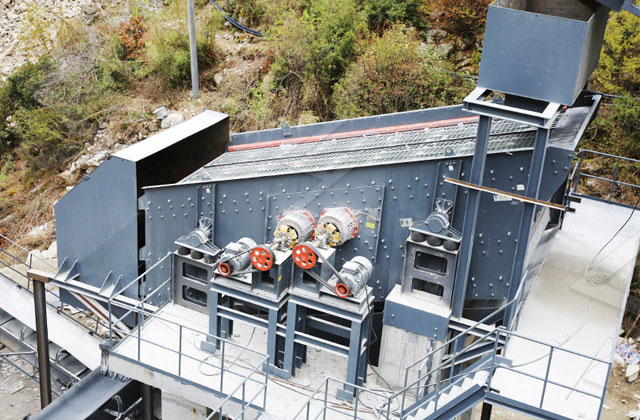A vibrating screen is a mechanical screening device used to separate materials by particle size. It plays a crucial role in many industrial processes, including mining, aggregate production, and recycling. The primary function of a vibrating screen is to sort and separate materials into different sizes based on their particle characteristics. The vibrating motion is generated by a combination of eccentric weights, an electric motor, and the screen structure itself.
At the heart of the vibrating screen is an eccentric shaft. This shaft is a central component that rotates to create the vibrational movement. Typically, it is equipped with two or more eccentric weights that are positioned at different points along the shaft. The eccentric weights generate a centrifugal force as they rotate, causing the shaft to vibrate in a circular motion.

The vibrating screen itself consists of a frame, a perforated plate or mesh, and a vibrating mechanism. The frame supports the plate or mesh and acts as a housing for the vibrating mechanism. The perforated plate or mesh is the surface through which the material to be screened passes.
The vibrating mechanism is responsible for imparting the necessary vibrational motion to the screen. It usually consists of an electric motor, which is mounted on the frame and connected to the eccentric shaft. The motor’s rotational force is transmitted to the eccentric weights on the shaft, causing them to rotate. As the eccentric weights rotate, they create an unbalanced force, leading to the circular vibration of the entire screen.
The frequency and amplitude of the vibration can be adjusted by modifying the position and mass of the eccentric weights, allowing for customization based on the specific requirements of the material being screened. Higher frequencies and amplitudes are generally used for finer materials, while coarser materials may require lower frequencies and amplitudes.
There are different types of vibrating screens, each designed for specific applications. Incline screens, for example, are tilted at an angle, facilitating the movement of material across the screen and improving screening efficiency. Horizontal screens have a horizontal plane of motion, making them suitable for both wet and dry screening applications.
Vibrating screens are employed in a variety of industries for numerous applications. In mining, they are used to separate valuable minerals from the surrounding rock and soil. In the aggregate industry, vibrating screens classify and separate materials such as sand, gravel, and crushed stone. Recycling plants utilize vibrating screens to sort and classify recycled materials. The versatility of vibrating screens makes them indispensable in many material processing operations.
In conclusion, the vibrating screen operates through the combined action of an eccentric shaft, eccentric weights, and an electric motor. The eccentric weights generate a circular vibration, and this motion is transmitted to the screen surface, where materials are sorted and classified based on their particle size. The ability to customize the frequency and amplitude of the vibration makes vibrating screens adaptable to a wide range of industrial applications, contributing to their widespread use in material processing and screening operations.


